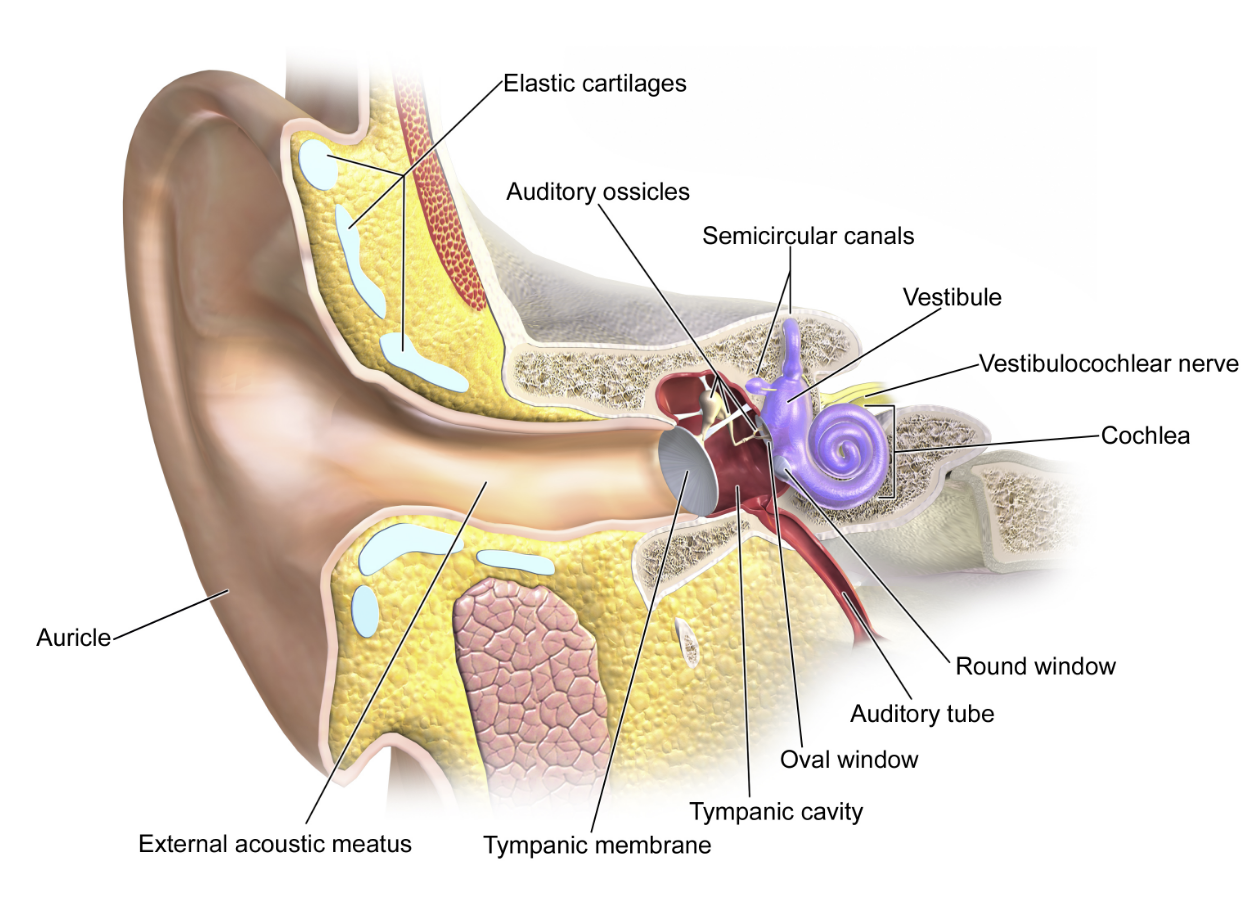Types of Hearing Loss
Conductive Hearing Loss
This occurs when sound is not conducted efficiently through the outer and middle ears, including the ear canal, eardrum, and the tiny bones, or ossicles, of the middle ear. Conductive hearing loss usually involves a reduction in sound level, or the ability to hear faint sounds. This loss can often be corrected through medicine, surgery, and/or hearing aid use.
Sensorineural Hearing Loss
This type of loss is the most common. It occurs when there is damage to the inner ear or to the nerve pathways from the inner ear to the brain. It is permanent and cannot be medically treated. Sensorineural loss may be hereditary or caused by aging, noise exposure, ototoxic drugs exposure, viruses, tumor and diseases or birth defects. Of these causes, the first three are the most common.
This type of loss not only reduces the intensity of sound, but often the clarity of speech as well. Depending on the degree and pattern of the loss, many report that they can hear but cannot understand conversation. Most individuals with sensorineural loss can be helped by hearing aids and other assistive devices.
Auditory Processing Disorders (APD)
This disorder occurs when the auditory centers of the brain is affected by injury, disease, tumor, heredity or unknown causes. APD does not necessarily involve (although it may) hearing loss. Auditory processing involves sound localization and lateralization, auditory discrimination, auditory pattern recognition, the temporal aspects of sounds, and the ability to deal with degraded and competing acoustic signals. Therefore, a deficiency in one or more of these behaviors may constitute an auditory processing disorder. APD is often associated with Attention Deficit Disorder (ADD) or Attention Deficit Hyperactivity Disorder (ADHD).
Protect those hair cells!
Current statistics indicate that hearing loss is now the third most prevalent chronic health concern among adults in the US. It is also growing in numbers in younger populations. The average 8th grade student today is 4 times as likely to suffer from noise induced hearing loss than 10 years ago.
Sometimes hearing loss is not preventable. Aging and genetics may contribute to a decline in hearing ability. The one thing we can control is noise exposure; weather it be work related or recreational. Noise induced hearing loss (NIHL) is 100% preventable. Taking precautions and listening safely will help endure good hearing for years to come.
Protecting one’s hearing when exposed to loud sounds, or avoiding loud sounds if possible, is key when it comes to hearing protection.
Common areas that may have potentially damaging levels of noise exposure (above 85 decibels) may be the use of power equipment, like lawnmowers. Regardless of the source of noise, if it is too loud to hear someone’s voice above the din, than it is probably too loud and hearing protection should be used.
As sounds travel through our ears, they eventually wind up in our senroy organ of hearing: the cochlea. Inside the cochlea are tens of thousands of delicate cells called “hair cells” since they resemble hair when looked at under a powerful microscope. The hair cells have an important job of passing on the information from the sound waves to the part of our brain that interprets sound. If these cells are damaged, or missing, they cannot pass along the sounds and the listener misses out on all or part of the signal. Protecting these cells from too much noise is key in hearing conservation. It’s usually the long term affects of the stress of listening that causes the breakdown of these cells, which is why a hearing loss may seem to “creep up” on an individual.
““I think people naturally hate to admit that they need hearing aids. My husband has a really soft voice. Hart makes it easier for both of us. Without the aids, I’d still be saying, “what did you say.” Or worse, I’d miss key words in conversations and leave with the wrong understanding. Get the aids, it will really help.””



